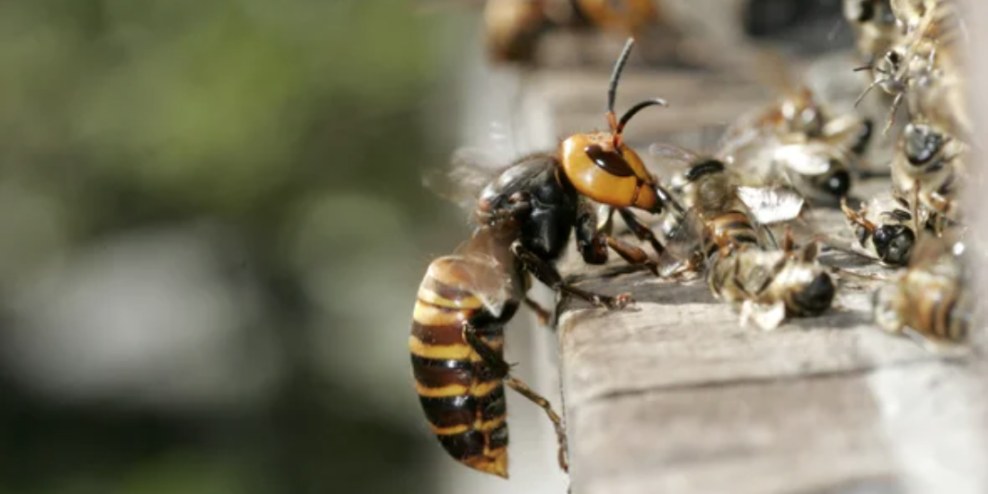Scientists might have found a way to get rid of murder hornets.
Asian giant hornets aren’t technically called murder hornets. They got that nickname because they cut the heads off bees and eat their bodies. It only takes a couple of hornets to destroy a whole colony of bees.
That’s pretty scary stuff. And they’ve been steadily making their way into Canada and the US.
So far, conservationists have tried to stop the spread of these giant hornets by getting rid of their nests. But that doesn’t seem to be working. The hornets keep popping up.
In China, researchers have found a way to sniff out the hornets and trap them before they have a chance to do a lot of damage. In the journal, Current Biology, researchers found three major elements of the queen’s sex pheromone, and they’re hoping to use that to track and trap the hornets.
It’s basically like perfume for hornets.
The idea piggy-backs off of another researcher’s work. James Nieh is a professor in the Division of Biological Sciences at the University of California San Diego. He used the same idea with a different hornet that was invading parts of Italy and France.
Researchers have tested traps that use the smell of the queen’s pheromones. Male hornets flock to the traps because they think it’s time to mate. Sorry, fellas. We know this sounds rough. But the traps can capture thousands of hornets at a time.
So instead of heading out into the woods to search for hornet nests, the traps bring the murder hornets to you.
Nieh doesn’t really like the name murder hornets. “[T]hey are large and perhaps frightening but not truly murderous,” he said in a press release. “They are amazing social insects, but they don’t belong in North America.”
No one knows how the Asian giant hornets got from Japan to North America. So far they’ve only been found in the Pacific Northwest.
“The hope is that somehow they don’t get transported from Washington state or British Columbia to the East Coast, where they could really become a problem, and possibly an even larger area for them to expand,” Nieh said.
If the hornet population gets too big, they could be a big threat to local bees. And because bees pollinate crops, that would mean farms are also at risk.
The pheromone traps are still being developed. Until they’re available, Nieh suggests that beekeepers use food as bait to trap any hornets that might be in the area. The hornets are attracted to alcohol, honey, and fruit juice. They also like brown sugar in water.
But the best thing beekeepers can do is keep a close eye on their colonies. If they see a bunch of bees that have been mauled outside a colony, there could be a murder hornet nest close by.
If you find an Asian giant hornet or think there’s a nest nearby, you can report it to the Invasive Species Council of BC using their website, calling at 1-888-933-3722, or via the council’s Report Invasives phone app.
It isn’t just the honeybees that are at risk from the hornets. The invasive hornet targets other wild species too.
“They feed on a wide variety of bees, and our native bees in North America are very important for our ecosystems. And they would have no defence against these hornets.”







